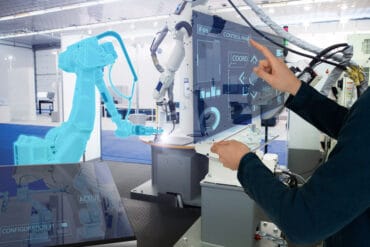
A connected, smart car factory enables a high-end auto manufacturer to manage mass customization.
Name of Organization: Maserati
Industry: Manufacturing
Location: Turin, Italy
Opportunity or Challenge Encountered: Not only are cars getting smarter – to the point where they are close to autonomous – the way they are made is getting smarter as well. Recent estimates from Capgemini estimates that overall, smart factories could add up to $160 billion annually to the global auto industry in productivity gains by 2023. “The automotive sector is the most enthusiastic industry about smart factories – it is making larger investments and setting higher targets for its digital manufacturing operations than any other sector,” the report’s authors state. “By the end of 2022, automotive manufacturers expect that 24% of their plants will be smart factories and 49% of auto makers have already invested more than $250 million in smart factories.” At the same time, despite all this potential, smart manufacturing in the auto sector has been slow to take off — “few automotive manufacturers have translated this enthusiasm into real progress – 42% of smart factory initiatives are struggling and the digital maturity of their manufacturing operations is below par,” says Capgemini.
See also: Case study – Real-time tech keeps railways on track
One auto manufacturer that is making progress with smart manufacturing is Maserati. Perhaps the company’s interest in smart manufacturing is for good reason: no two of the autos it ships are alike — it prides itself on providing extreme customization, even with 50,000 luxury autos a month being shipped. As a result, its manufacturing plants produce a range of different parts. Recently, James Lorincz of Advanced Manufacturing documented how the company’s Turin manufacturing plant made the transition. The plant which produced more than 5,000 components, resulting in millions of possible combinations. The time was ripe to move to smart factory technology.
How the Opportunity was Met: The company worked with Comau, an automotive automated assembly systems producer, to create a “direct electronic dialog between production cells,” enabling its entire logistics chain to “becomes digitally interconnected, Lorincz relates. Each chassis produced is coded “with a unique identification number that is subsequently recognized throughout every stage of the manufacturing process,” so it may rapidly be matched with other components associated with the vehicle on order. The company then employs robots for parts handling, riveting, sealing and spot welding. “As the chassis moves through the production cycle, the digitally interconnected equipment delivers real-time production data when and where it is needed, helping reduce downtime while improving overall quality,” Lorincz adds.
Robotics is an essence piece of the solution. According to Comau, in designing the production strategy for two of its most luxurious automobiles, the Quattroporte and the Ghibli, Maserati developed a robotic solution based on robots and advanced software applications that can automate complex bodyshop operations with extreme precision. Such flexibility means the line can be programmed to automatically determine whether the piece is for the Quattroporte or Ghibli, and can produce one of the two models, or both, in a continuous flow, depending on production needs.
Benefits of This Imitative: The analytics produced with this smart factory process “provide Maserati with a wealth of information regarding production flows and vehicle throughput,” Lorincz explains. Information is accessible via tablets and mobile devices, replacing paper manuals. “The analysis and interpretation are graphically represented in an immediate and user-friendly manner, which allows operators and engineers to quickly assess the health of the individual machines and identify potential break-downs or bottlenecks before they happen,” according to Massimo Ippolito, innovation manager for Comau, quoted in the case study.
Comau reports that the introduction of 82 robots across Maserati’s assembly processes has streamlined build times and full coordination between manual and automated processes, as well as enabled the simultaneous processing of parts and subgroups on models with different components and chassis lengths. More than half of the weld spots are now applied automatically,
The system also enables the company to manage maintenance and and component replacement, employing historical and statistical data gathered. “Furthermore, the robots themselves are designed to interface with the operator, signaling the possibility of component wear,” Lorincz adds. “This allows operators to intervene before the issue can result in throughput inefficiencies or downtime; thus, ensuring the long-term repeatability and efficiency of the robots and more importantly, the quality of the manufacturing.”
Sources: James Lorincz, Advanced Manufacturing, Comau, Capgemini





























